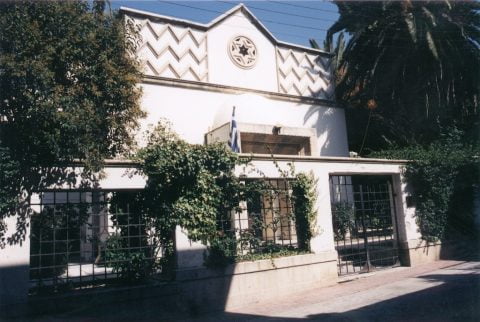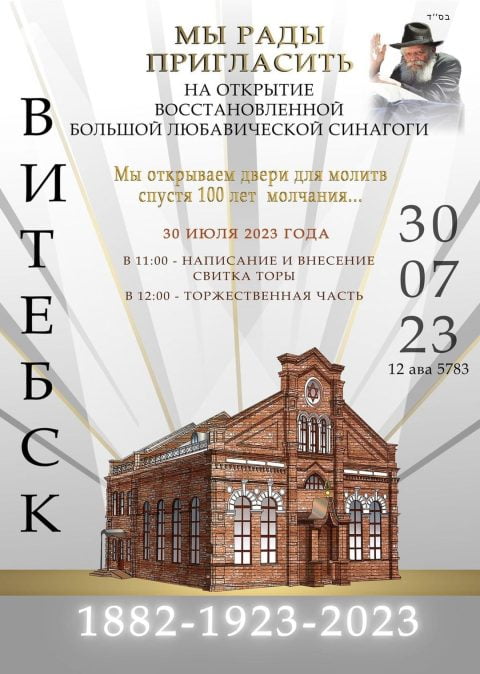
“Case di vita. Sinagoghe e cimiteri in Italia” — “Houses of Life: Synagogues and cemeteries in Italy”
The exhibit, curated by Andrea Morpurgo and the MEIS director Amadeo Spagnoletto, focuses on the architectural, ritual, and social dimensions of the synagogues and Jewish cemeteries in Italy.
It displays architectural plans, documents from state archives and Jewish communities, family heirlooms, and prestigious loans such as the Ark of the Jewish Community of Vercelli.

The annual “Open Jewish Houses/Houses of Resistance” commemorative program takes place in a score of towns and cities around the Netherlands.
Storytellers, visitors and residents share stories in houses where Jews or members of the resistance lived and worked before, during and just after the Second World War.

An exhibition marking the 80th anniversary of the torching of the Sinagoga Tedesca by local fascist squads. The synagogue now houses the Jewish Museum in Padova.
The exhibit will feature historic photographs and archival documents, and there will be explanatory talks at the opening.
The even is free, but please reserve here – museo@padovaebraica.it or Tel. 049661267 – Whatsapp 3756347243

Archive documents, drafts and testimonies restore personal and professional dignity to nine stories interrupted by racial laws.
On 14 July 1938, the Race Manifesto was published in Il Giornale d’Italia, signed by ten scientists and professors, which was to become the ideological basis of the regime’s racist policy. This document was followed by the Racial Laws, aimed at increasingly stripping non-members of the ‘Italian race’ of their rights. In this escalation of the curtailment of freedoms and subtraction of civil rights, other laws were promulgated on 29 June 1939 regulating ‘the exercise of professions by citizens of the Jewish race’.
The exhibit features these architects:
Daniele Calabi, Angelo Di Castro, Romeo Di Castro, Enrico De Angeli, Vito Latis, Gino Levi Montalcini, Alessandro Rimini, Ernesto Nathan Rogers, Nina Livia Viterbo
The exhibition is conceived as part of the project ‘Architecture and Remembrance. The discrimination of architects in nazi-fascist regimes”.

A Zoom webinar in English introducing the current temporary exhibition at MEIS — the National Museum of Italian Judaism and the Shoah in Ferrara— Houses of Life; Synagogues and Jewish Cemeteries in Italy.
The exhibition mainly features plans and architectural drawings of synagogues, as well as gravestones, tombs, and other architecture features, through the ages.
A historic ark and other Judaica are also featured.
Speakers in the webinar include the two curators of the exhibition, Andrea Morpurgo and MEIS director Amadeo Spagnoletto, as well as Dr. Jessica Del Russo.
Click here to receive the Zoom link

Inauguration of the restored synagogue on the island of Kos.
A new Ark and Bimah and other interior furnishings have been installed and — after decades out of its original use — the building will be rededicated as an active house of Jewish worship.
The Kos synagogue was built in the mid-1930s to replace an older synagogue that was destroyed in an earthquake in April 1933. It was abandoned after the near-total destruction of the circa 120 member Jewish community during the Holocaust, and then was purchased by the Municipality around 1984 and used as a local cultural centre.

Presenting a selection of nearly 150 pieces from various sources, this photographic exhibition recreates the history of Salonika (today Thessaloniki) Greece from the second half of the 19th century to the end of the First World War. Men and women are captured in their traditional costumes: modest artisans, porters, traders, members of the local “aristocracy;” society is revealed. Urban modernization is also shown: the quays and the White Tower, cafes, restaurants and entertainment venues; the Countryside sector where the notables established their residence; deprived areas, where emerging industries were established.
But also, in the now Greek city, the great fire of August 1917, an authentic trauma for the Jews who saw their historic neighborhoods, the municipal archives and more than thirty synagogues swept away by the flames, before the geopolitical upheavals caused by the First War worldwide.

The history of the Jewish ghetto of Florence, which existed in the city between the sixteenth and nineteenth centuries, is an exhibition organized by the Uffizi Galleries and arranged in the Gallery of Modern Art of Pitti Palace. Curated by Piergabriele Mancuso, Alice S. Legé and Sefy Hendler (The Medici Archive Project), the exhibition can be visited until January 28, 2024.
The ghetto of Florence was established in 1570 by Cosimo I and Carlo Pitti, and was demolished between 1892 and 1895. For almost three centuries the ghetto was the gravity point of Hebraism in Florence.
Subdivided into five sections,the exhibition draws from the extraordinary cultural heritage of Florence as well as from important international loans. It reveals a significant and forgotten chapter of the Medici’s political strategy in a centuries-old context of conflicts, diplomacy and cultural exchanges.
The exhibition starts with the Florence of Cosimo the Elder and Lorenzo the Magnificent; illuminated manuscripts commissioned by Jewish and Medici patrons, which was the result of the interaction between Jewish scribes and Christian artists of the early Tuscan Renaissance; loans from the Jewish Theological Seminary of New York and many Italian libraries. Republican and Medicean imagery intertwine in the depiction of paradigmatic biblical figures, “Jewish heroes” such as Donatello’s bronze David (on loan from the Berlin Museums), or Joseph from the series of tapestries woven in Flanders for Cosimo I. The exhibition places mythical figures alongside real ones, revealing little-known pieces of the history of Florentine Judaism, such as the activity of the explorer Moisè Vita Cafsuto or that of the Jewish painter Jona Ostiglio, whose pantings were all commissioned by the Medici court, together with the self-portrait of Isaia or David Tedesco, a little-known author who was probably a pupil of Ostiglio in the first ever art workshop inside an Italian ghetto.
A place of segregation, but also the fulcrum of an important human, cultural and spiritual microcosm, the ghetto of Florence is also reconstructed through a three-dimensional model, the result of a decade of research conducted by the Eugene Grant Jewish History Program of The Medici Archive Project.
Caring about the multiplicity of audiences and the need to break down prejudices and stereotypes, the exhibition investigates the way in which the history of the Grand Duchy is intertwined with that of the Jewish minority, finally shedding light on the events of an important and so far little known chapter of the Renaissance Florence.



Comments are closed.